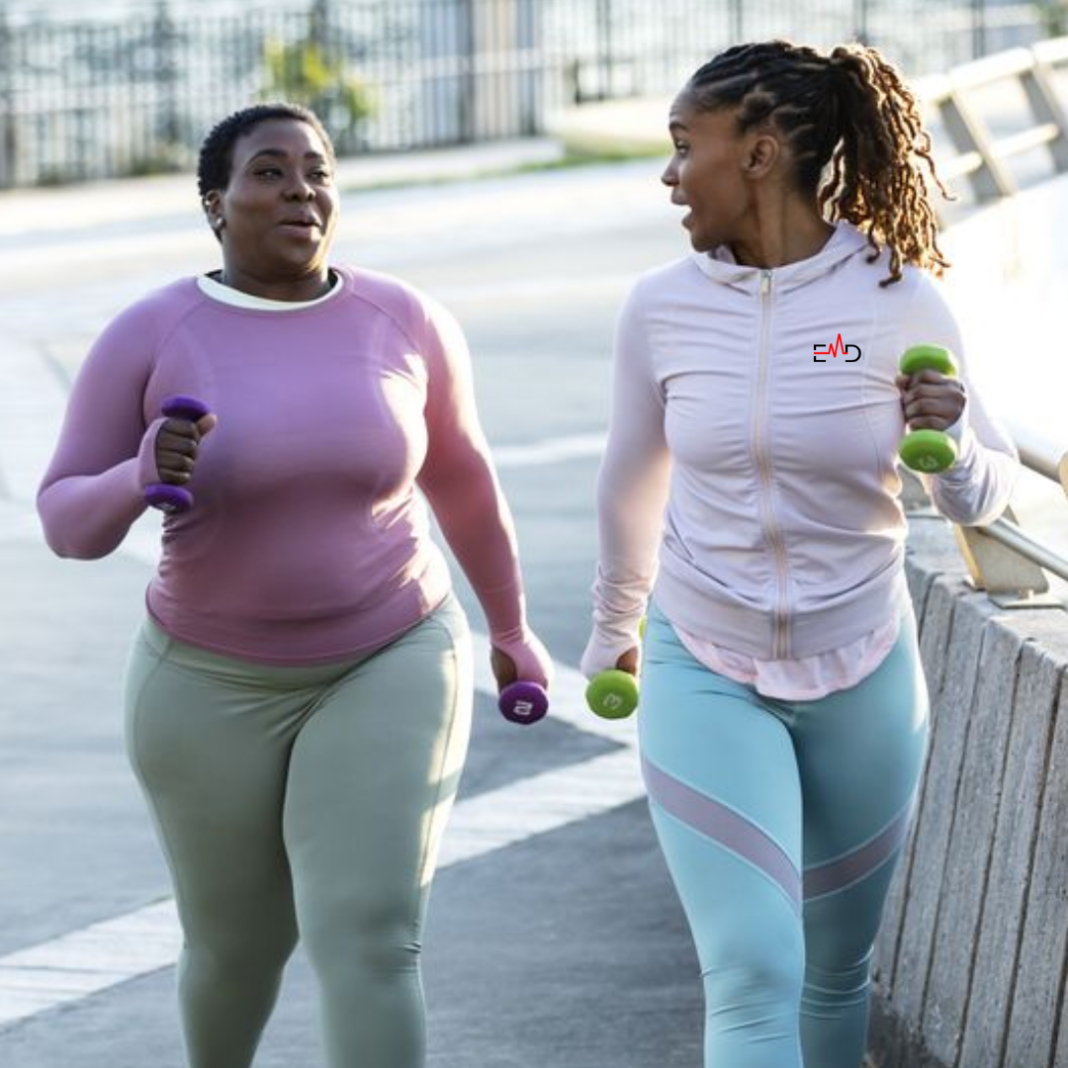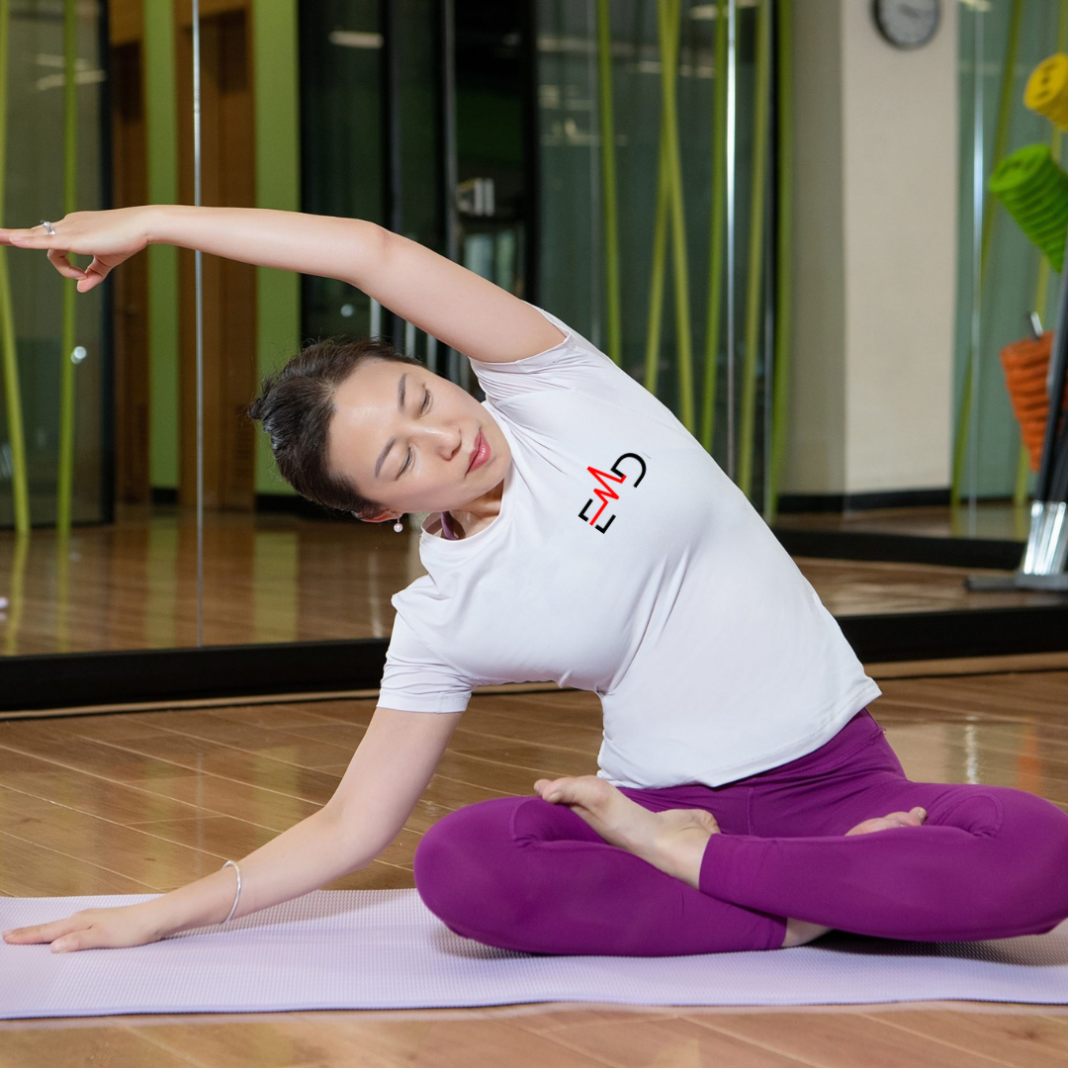Exercise Daily – Greetings, fitness enthusiasts! Are you ready to embark on a journey towards shedding those extra pounds while enjoying invigorating workouts? Cardio exercises are a fantastic way to burn calories, elevate your heart rate, and kickstart your weight loss journey. This comprehensive guide will explore the top 10 cardio exercises specifically tailored for effective weight loss.
Cardio Exercises
Cardiovascular exercise, often known as cardio, is any physical activity that raises your heart rate and makes your body work harder than usual. Cardio exercises are essential to a healthy lifestyle, as they can help you improve your heart health, lose weight, and reduce your risk of chronic diseases.
Cardiovascular exercises offer a multitude of benefits beyond weight loss. They enhance heart health, boost metabolism, and improve overall fitness levels. Regular cardio workouts elevate mood by releasing endorphins, reducing stress, and promoting better sleep quality.
Types of Cardio Exercises
There are many different types of cardio exercises, so you can find something that you enjoy and that fits your fitness level. Here are a few of the most popular types of cardio exercises:
- Brisk walking: Brisk walking is a great way to increase your heart rate without putting too much stress on your body. It’s a good option for people of all fitness levels.
- Running: Running is a more intense form of cardio than brisk walking, but it’s also a great way to burn calories and improve cardiovascular health.
- Swimming: Swimming is a low-impact cardio exercise that’s easy on your joints. It’s a good option for people with injuries or chronic pain.
- Cycling: Cycling is a fun and effective way to increase your heart rate. You can cycle outdoors or indoors on a stationary bike.
- Dancing: Dancing is a great way to increase your heart rate while having fun. There are many different types of dance, so you can find something you enjoy.
These are just a few of the many different types of cardio exercises that you can do. The important thing is to find an activity that you enjoy and can stick with. If you’re new to cardio exercise, it’s a good idea to start slowly and gradually increasing your workouts’ intensity and duration.
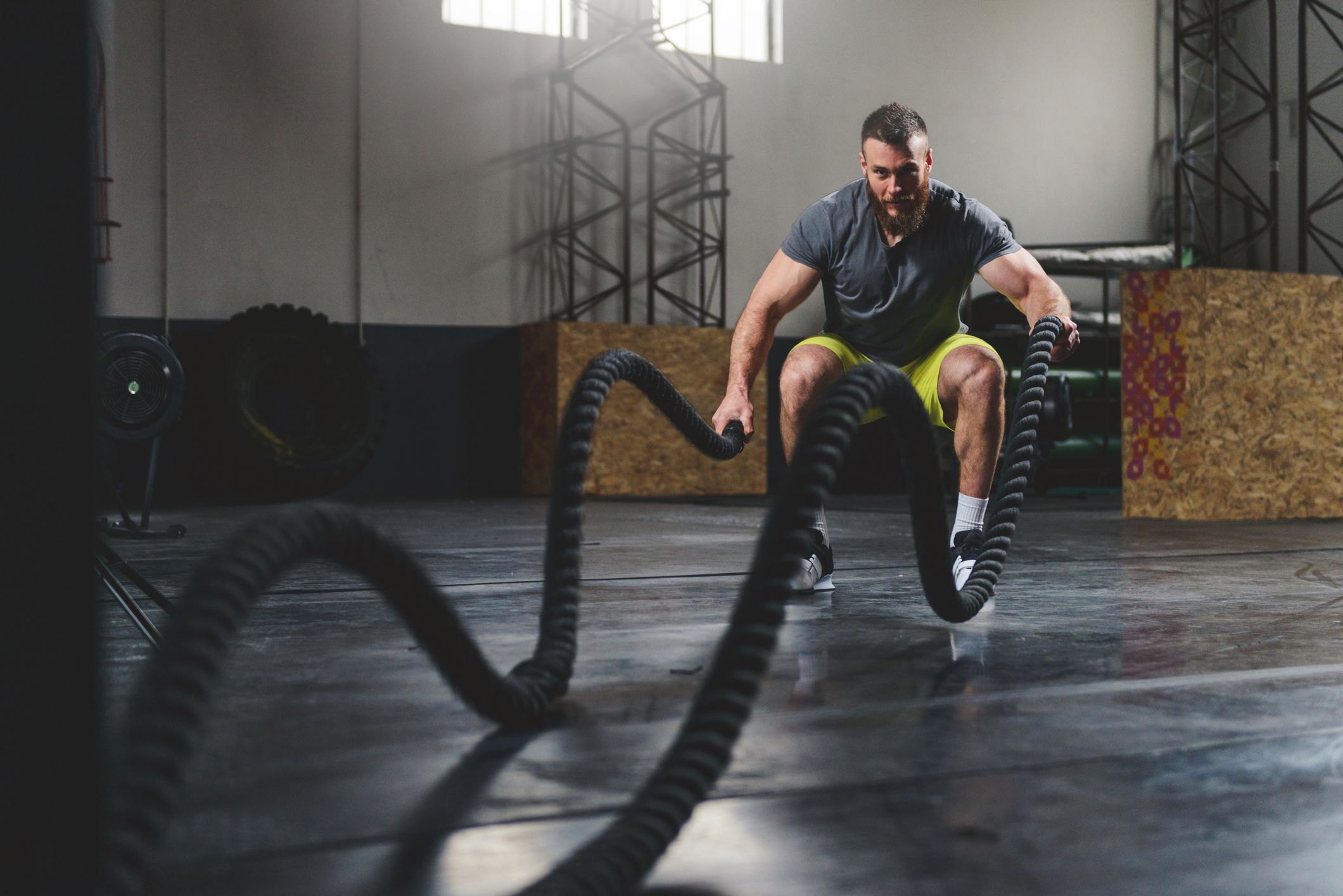
Criteria for Effective Weight Loss
Effective weight loss is not just about shedding pounds; it’s about achieving and maintaining a healthy weight that supports your overall well-being. While there’s no one-size-fits-all approach to weight loss, several key criteria can help you make informed decisions and achieve sustainable results.
For optimal weight loss results, it’s crucial to understand the key factors that make cardio exercises effective. Consistency, intensity, duration, and proper form are pivotal in achieving desired weight loss goals.
1. Establish Realistic Goals:
Setting realistic weight loss goals is crucial for long-term success. Aiming for gradual, sustainable weight loss of 1-2 pounds per week is generally recommended. This approach allows your body to adapt, reduces the risk of muscle loss, and increases the likelihood of maintaining the lost weight.
2. Prioritize Nutrient-Dense Foods:
Focus on consuming whole, unprocessed foods rich in nutrients like vitamins, minerals, fiber, and healthy fats. These foods provide essential nourishment for your body while keeping you satiated and reducing the temptation to overeat.
3. Reduce Calorie Intake:
Creating a calorie deficit, where you burn more calories than you consume, is essential for weight loss. However, it’s important to avoid drastic calorie restriction, which can lead to nutrient deficiencies and muscle loss. A gradual reduction of 500-1000 calories daily is a safe and effective approach.
4. Incorporate Regular Physical Activity:
Regular physical activity is an integral part of effective weight loss. Aim for at least 30 minutes of moderate-intensity exercise most days of the week. Exercise burns calories and builds muscle, boosting your metabolism and promoting long-term weight management.
5. Prioritize Quality Sleep:
Adequate sleep is crucial for regulating hormones that control appetite and metabolism. Aim for 7-8 hours of quality sleep each night to support your weight loss goals.
6. Manage Stress Effectively:
Chronic stress can increase cortisol levels, a hormone that promotes fat storage and hinders weight loss. Practice stress management techniques like meditation, yoga, or deep breathing to control stress levels.
7. Seek Professional Guidance:
Consider consulting a registered dietitian or healthcare professional for personalized advice and support. They can help you create a tailored weight loss plan, address any underlying health conditions, and provide ongoing guidance to ensure safe and sustainable weight loss.
8. Monitor Your Progress:
Regularly monitor your progress by tracking your weight, measurements, and overall well-being. This will help you identify areas for improvement and adjust your plan as needed.
9. Be Patient and Consistent:
Effective weight loss is a journey, not a race. It requires patience, consistency, and a willingness to make lifestyle changes. Celebrate your progress, learn from setbacks, and stay committed to your long-term goals.
10. Make it a Lifestyle Change:
Sustainable weight loss is about adopting healthy habits you can maintain. Focus on gradual, sustainable changes to your diet and lifestyle rather than drastic short-term fixes.

Top 10 Cardio Exercises for Weight Loss
1. Running or Jogging
Pound the pavement or hit the treadmill for a calorie-burning cardio session. Running or jogging is an accessible, high-impact exercise that torches calories and improves cardiovascular endurance.
Running and jogging are both forms of aerobic exercise that involve using large muscle groups for an extended period. This type of exercise is beneficial for overall health and fitness, as it can help to:
- Burn calories and lose weight
- Improve cardiovascular health
- Strengthen bones and muscles
- Reduce stress
- Improve mood
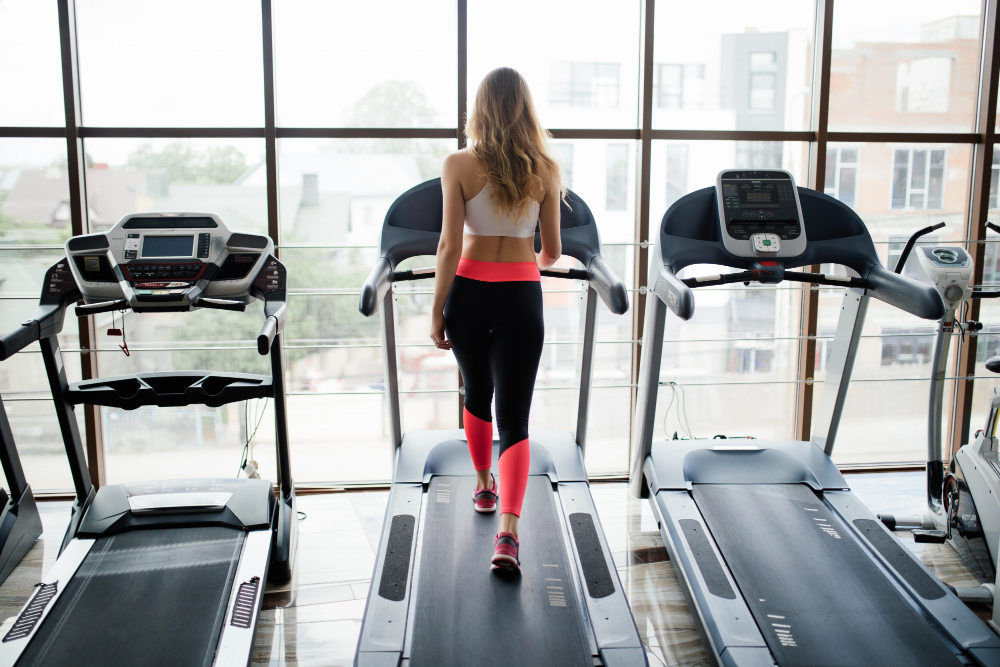
Accessible Exercise
Running and jogging are accessible to people of all ages and fitness levels. You don’t need any special equipment or training to get started. All you need is a pair of comfortable shoes and a place to run or jog.
High-Impact Exercise
Running and jogging are high-impact exercises, which means they put stress on your joints. This can be a risk factor for injuries, so starting slowly and gradually increasing your intensity is important. You should also wear supportive shoes to help protect your joints.
Calorie-Burning Cardio Session
Running and jogging are great ways to burn calories. The number of calories you burn will depend on your weight, pace, and distance. However, a general rule of thumb is that you can burn about 100 calories per mile.
Cardiovascular Endurance
Cardiovascular endurance is the ability of your heart and lungs to work together efficiently to deliver oxygen to your muscles during exercise. Running and jogging can help to improve your cardiovascular endurance, which can benefit your overall health and fitness.
2. Jump Rope
A simple yet highly effective exercise, jump rope engages multiple muscle groups while rapidly burning calories. It’s a portable and fun option for an intense cardio workout.
Jump rope, a seemingly simple exercise, has long been underestimated in its ability to deliver a comprehensive full-body workout. Often associated with childhood playgrounds, jump rope, when incorporated into a fitness routine, can yield remarkable results for individuals of all ages and fitness levels.

The Essence of Jump Rope
Jump rope involves a rhythmic bouncing motion while rotating a rope underfoot. The exercise engages multiple muscle groups simultaneously, including the calves, quadriceps, hamstrings, glutes, core, and shoulders. This multi-muscle engagement enhances overall strength, coordination, and cardiovascular endurance.
Jump Rope Techniques and Variations
Jump rope offers a variety of techniques and variations to enhance workouts and target specific muscle groups:
-
Basic Jump: The fundamental jump rope technique involves a rhythmic bouncing motion with the rope passing underfoot.
-
High Knees: Incorporate high knee raises into the jump rope motion, engaging the core and quadriceps.
-
Butt Kicks: Incorporate butt kicks into the jump rope motion, targeting the hamstrings and glutes.
-
Alternate Foot Jumps: Hop on one Foot for two jumps, then switch to the other, alternating throughout the set.
-
Double Unders: Rotate the rope twice underfoot for each jump, requiring increased speed and coordination.
-
Side Swings: Swing the rope from side to side, engaging the obliques and improving core stability.
Safety Considerations
To ensure a safe and enjoyable jump rope experience, follow these guidelines:
-
Choose the Right Rope: Select a rope of appropriate length, allowing for comfortable movement.
-
Suitable Surface: Jump on a flat, resilient surface to minimize joint impact.
-
Proper Form: Maintain proper posture with a neutral spine, avoiding excessive bouncing or leaning forward.
-
Warm-Up and Cool-Down: Warm up before jumping rope and cool down afterward to prevent muscle strain or injury.
-
Hydration: Stay hydrated throughout the workout to maintain performance and prevent dehydration.
-
Listen to Your Body: Gradually increase intensity and duration, avoiding overexertion.
-
Seek Guidance: If you are new to jump rope, consider seeking guidance from a certified fitness professional.
3. Cycling
Whether outdoors or indoors on a stationary bike, cycling offers a low-impact yet high-calorie burning exercise suitable for all fitness levels.
Cycling is a fantastic way to increase your heart rate, improve cardiovascular health, and strengthen your muscles. It’s also a low-impact exercise, which is gentle on your joints. This makes it a great option for people of all fitness levels, including those with injuries or joint pain.

Types of Cycling
There are two main types of cycling: outdoor cycling and indoor cycling.
-
Outdoor cycling: Outdoor cycling is a great way to enjoy the scenery and get fresh air. You can cycle on roads, trails, or even in your neighborhood.
-
Indoor cycling: Indoor cycling is a great option for people who want to cycle but don’t have access to a safe outdoor cycling area. You can cycle on a stationary bike at home or the gym.
Getting Started with Cycling
If you’re new to cycling, there are a few things you should do before you get started:
-
Get a bike that fits you: It’s important to get a bike that is the right size. This will help to prevent injuries and make your cycling experience more enjoyable.
-
Wear a helmet: It’s important to wear a helmet when cycling to protect your head in case of a fall.
-
Start slowly and gradually increase your intensity: Don’t try to do too much too soon. Start slowly and gradually increase your intensity over time.
-
Listen to your body: Stop and rest if you feel any pain. Don’t push yourself too hard.
4. Swimming
Dive into a pool for a gentle full-body workout on the joints. Swimming engages various muscles and is an excellent choice for low-impact cardio exercise.
Immerse yourself in the refreshing world of swimming and discover an exercise that is gentle on your joints and highly effective in strengthening your body. Swimming is a low-impact cardio activity that engages nearly all major muscle groups, making it an ideal choice for individuals of all ages and fitness levels.
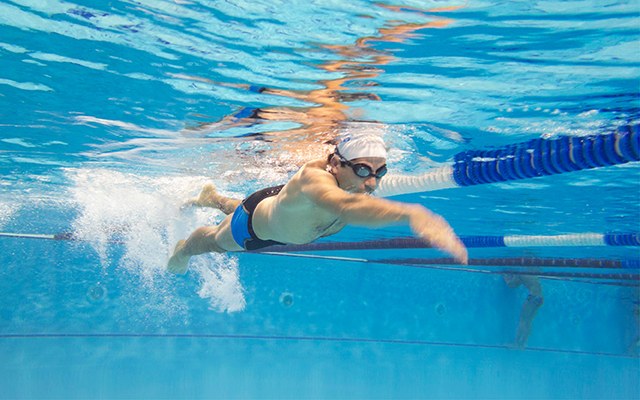
Incorporating Swimming into Your Routine
Swimming can be easily incorporated into your workout routine, whether as a standalone cardio session or integrated into a circuit training program. For beginners, start with short laps and gradually increase the duration and intensity as fitness improves.
Swimming Techniques and Variations
Swimming offers a variety of techniques and variations to enhance workouts and target specific muscle groups:
-
Freestyle: The most common swimming stroke, freestyle engages the arms, shoulders, chest, and back.
-
Backstroke: Backstroke strengthens the back muscles, shoulders, and triceps.
-
Breaststroke: Breaststroke works the chest, shoulders, triceps, and legs, providing a comprehensive upper and lower body workout.
-
Butterfly: Butterfly is a challenging stroke involving the arms, shoulders, chest, back, and legs.
-
Kickboard Drills: Kickboard drills isolate the legs, strengthening the quads, hamstrings, glutes, and calves.
-
Aqua Jogging: Aqua jogging combines jogging with water resistance, providing a low-impact cardio workout.
-
Water Aerobics: Water aerobics incorporates dance moves and exercises into a fun and effective aquatic workout.
Safety Considerations
To ensure a safe and enjoyable swimming experience, follow these guidelines:
-
Warm-Up and Cool-Down: Always warm up before swimming and cool down afterward to prevent muscle strain or injury.
-
Proper Form: Maintain proper posture and technique to avoid strain on your neck, back, and shoulders.
-
Hydration: Stay hydrated throughout the workout to maintain performance and prevent dehydration.
-
Know Your Limits: Don’t push yourself beyond your physical limits. Rest when needed.
-
Seek Guidance: If new to swimming, consider seeking guidance from a certified swimming instructor.
5. High-Intensity Interval Training (HIIT)
HIIT involves short bursts of intense exercises followed by brief recovery periods. It’s an efficient way to burn fat and boost metabolism quickly.
During a HIIT workout, you will alternate between short periods of intense exercise, such as sprinting or jumping jacks, with rest periods, such as walking or jogging slowly. The intensity of the exercise should be high enough that you are working at your maximum effort. The rest periods should be long enough to recover before starting the next interval.
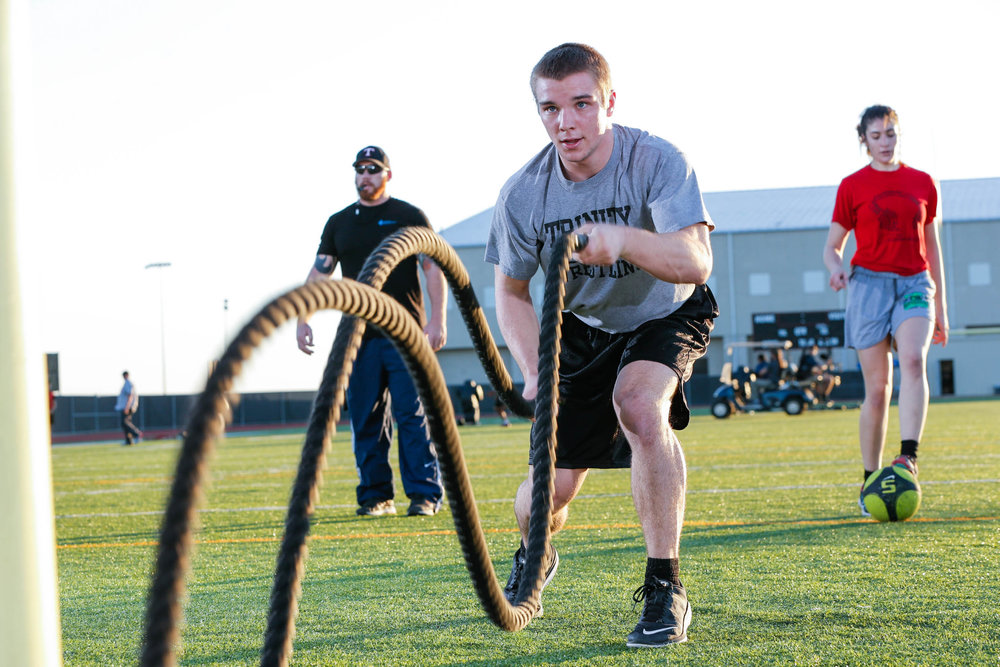
Types of HIIT workouts
There are many HIIT workouts, but all involve alternating between short bursts of intense exercise and rest periods. Some popular HIIT workouts include:
- Tabata training: This type of HIIT workout involves alternating between 20 seconds of intense exercise and 10 seconds of rest for eight rounds.
- Sprints: This type of HIIT workout involves alternating between short sprints and periods of walking or jogging slowly.
- Burpees: This type of HIIT workout involves alternating between burpees and periods of rest.
- Jump rope: This type of HIIT workout involves jumping rope for short periods at a high intensity.
Getting started with HIIT
If you are new to HIIT, it is important to start slowly and gradually increase the intensity of your workouts over time. You should also talk to your doctor before starting any new exercise program, especially if you have any health conditions.
6. Rowing
Arrowing provides an effective cardio workout while also strengthening core muscles by utilizing both upper and lower body muscles.
Rowing, an exercise often associated with competitive athletes, offers a comprehensive workout that benefits individuals of all fitness levels. Engaging both upper and lower body muscles while strengthening the core, rowing provides an effective cardio exercise and a versatile tool for enhancing overall fitness.
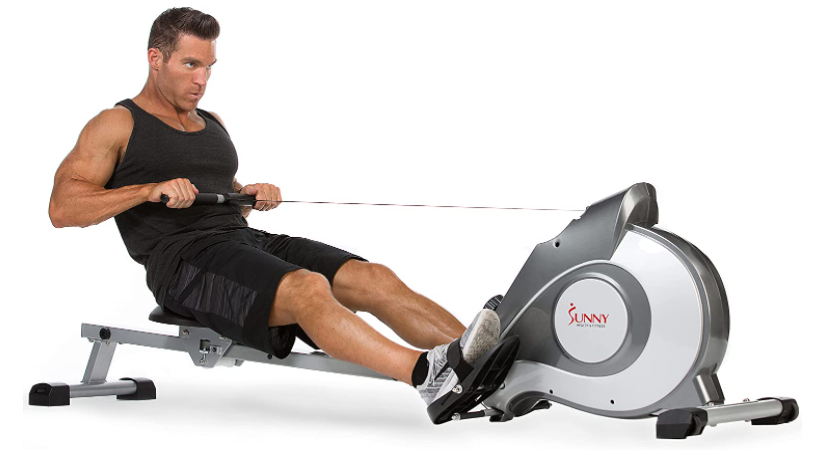
Incorporating Rowing into Your Routine
Rowing can be easily incorporated into your workout routine as a standalone cardio session or integrated into a circuit training program. For beginners, start with short intervals and gradually increase the duration and intensity as fitness improves.
Rowing Techniques and Variations
Rowing offers a variety of techniques and variations to enhance workouts and target specific muscle groups:
-
Basic Rowing: The fundamental rowing technique involves a rhythmic pulling motion with the arms and legs, engaging the entire body.
-
High Knees: Incorporate high knee raises into the rowing motion, engaging the core and quadriceps.
-
Butt Kicks: Incorporate butt kicks into the rowing motion, targeting the hamstrings and glutes.
-
Alternate Foot Jumps: Hop on one Foot for two rows, then switch to the other, alternating throughout the set.
-
Power Strokes: Perform powerful strokes by applying maximum effort to the pulling motion, enhancing strength and power.
-
Endurance Strokes: Maintain a moderate pace for an extended period, improving endurance and stamina.
Safety Considerations
To ensure a safe and enjoyable rowing experience, follow these guidelines:
-
Proper Form: Maintain proper posture with a neutral spine, avoiding excessive leaning forward or slouching.
-
Warm-Up and Cool-Down: Always warm up before rowing and cool down afterward to prevent muscle strain or injury.
-
Hydration: Stay hydrated throughout the workout to maintain performance and prevent dehydration.
-
Listen to Your Body: Don’t push yourself beyond your physical limits. Rest when needed.
-
Seek Guidance: If new to rowing, consider seeking guidance from a certified rowing instructor to ensure proper technique and safety.
7. Kickboxing
Channel your inner warrior with Kickboxing. This high-energy cardio workout combines martial arts techniques with aerobic movements for a challenging session.
Kickboxing is a dynamic and energetic fitness activity that combines the power and precision of martial arts with the heart-pumping intensity of cardio exercise. It’s an excellent way to get a full-body workout, burn calories, and improve coordination and agility.
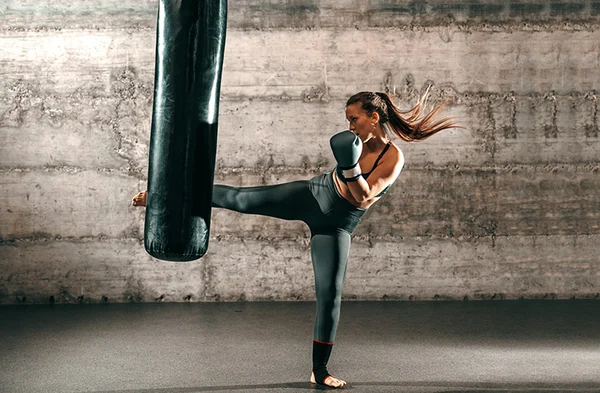
Kickboxing Techniques
The Kickboxing incorporates a variety of techniques from different martial arts, including:
- Punches: Punches are the foundation of Kickboxing, engaging the arms, shoulders, and chest.
- Kicks: Kicks target the legs, glutes, and core, providing a powerful lower-body workout.
- Blocks: Blocks defend against attacks, enhancing coordination and reaction time.
- Footwork: Proper footwork is essential for movement, agility, and balance.
Kickboxing Variations
Kickboxing offers various styles and variations to suit different preferences and fitness levels:
- Traditional Kickboxing: A combination of punches, kicks, and blocks, emphasizing technique and precision.
- Muay Thai: A Thai-style kickboxing known for its powerful kicks and clinch fighting.
- Cardio Kickboxing: A high-intensity workout focused on burning calories and improving cardiovascular fitness.
- Aerobic Kickboxing: Combines Kickboxing with aerobic dance moves for a fun and energetic workout.
Getting Started with Kickboxing
If you’re new to Kickboxing, starting slowly and gradually increasing the intensity as your fitness improves is important. Here are some tips for getting started:
- Find a reputable kickboxing gym or instructor: Proper guidance and technique are essential to prevent injuries and maximize the benefits of Kickboxing.
- Wear appropriate clothing: Wear comfortable and breathable clothing that allows for freedom of movement.
- Hydrate before, during, and after: Staying hydrated will help you maintain performance and prevent dehydration.
- Listen to your body: Don’t push yourself beyond your limits. Rest when needed.
- Enjoy the process: Kickboxing is a fun and rewarding exercise. Focus on enjoying the workout and improving your skills over time.
8. Dancing
Turn up the music and groove your way to fitness! Dancing is a joyful way to burn calories and improve cardiovascular health while having a blast.
Dancing is a fantastic way to get exercise while having fun! It’s a great way to burn calories, improve cardiovascular health, and tone muscles. And it’s a lot of fun! There are many different styles of dance to choose from, so you can find one you enjoy.

Getting started
If you’re new to dancing, there are a few things you can do to get started:
- Take a dance class: This is a great way to learn the basics of a particular dance style.
- Watch dance videos online: There are many free dance videos available online that you can watch and follow along with.
- Dance at home: Put on some music and dance around your house. Don’t worry about looking silly – have fun!
- Join a dance group: This is a great way to meet new people and make friends who enjoy dancing.
Dancing safety
Here are a few safety tips to keep in mind when dancing:
- Warm up before dancing: This will help to prevent injuries.
- Wear comfortable shoes: Shoes with good support are important to prevent ankle injuries.
- Stay hydrated: Drink plenty of water before, during, and after dancing.
- Listen to your body: Stop dancing if you feel pain.
9. Stair Climbing
Utilize stairs for a powerful lower body workout that elevates heart rate and burns calories effectively.
Stair climbing is an excellent exercise that can be incorporated into your daily routine for an effective lower-body workout, improved cardiovascular health, and increased calorie burning. Whether you opt for indoor stairs or outdoor staircases, this simple exercise offers a range of benefits to enhance your overall fitness.

Enhanced Lower Body Workout
Stair climbing primarily targets the lower body muscle groups, including the quads, hamstrings, glutes, and calves. With each step, these muscles engage in a powerful contraction, promoting strength, endurance, and definition. Regular stair climbing can help tone and sculpt your lower body, leading to a more shapely and athletic physique.
Improved Cardiovascular Health
Stair climbing effectively elevates your heart rate, stimulating your cardiovascular system and enhancing efficiency. As you climb stairs, your heart pumps more blood throughout your body, delivering oxygen and nutrients to your muscles and tissues. This improved circulation contributes to a healthier heart, reduced blood pressure, and a lower risk of heart disease and stroke.
Increased Calorie Burning
Stair climbing is a calorie-burning powerhouse, capable of torching up to 15 calories per minute. This means that a 10-minute stair climb can burn around 150 calories, making it an efficient way to manage weight and maintain a healthy body composition. The intensity of your stair climbing can be adjusted to match your fitness level, allowing you to tailor your workout for maximum calorie burn.
Versatility and Convenience
Stair climbing is a versatile exercise that can be easily incorporated into your daily routine. Whether you climb stairs at home, work, or outdoors, you can easily find opportunities to add this exercise to your day. Stair climbing is also convenient, requiring no additional equipment or gym memberships.
10. Circuit Training
A blend of strength and cardio exercises, circuit training enhances endurance, burns fat, and promotes muscle growth.
Circuit training, a dynamic and effective exercise regimen, combines strength and cardio exercises into a high-intensity workout. This synergistic approach to fitness offers many benefits, including enhanced endurance, efficient fat-burning, and accelerated muscle growth.
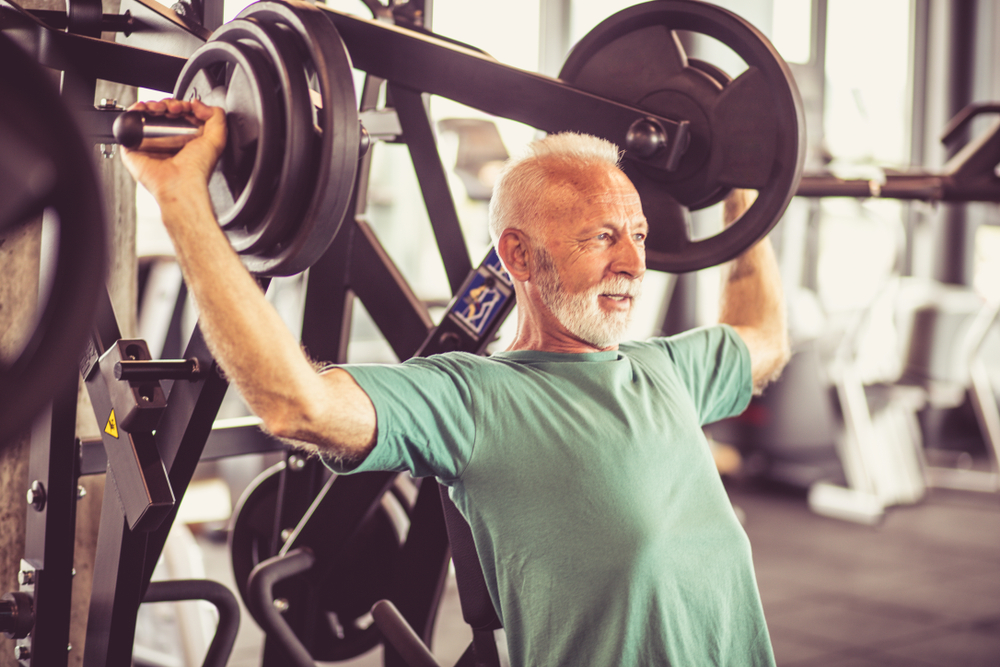
The Essence of Circuit Training
Circuit training involves a series of strength training exercises performed rapidly, followed by brief rest periods. The circuit is repeated multiple times to achieve a challenging and comprehensive workout. This high-intensity format elevates heart rate, engages multiple muscle groups simultaneously, and maximizes calorie burning.
Incorporating Circuit Training into Your Routine
Circuit training can be easily incorporated into your workout routine, whether as a standalone session or integrated into a larger exercise program. For beginners, start with two or three circuits of 10-12 repetitions per exercise, with 30-second rest intervals. Gradually increase the number of circuits, repetitions, and intensity as fitness improves.
Circuit Training Variations: Tailored to Your Needs
Circuit training offers various modifications and variations to suit individual needs and preferences:
-
Strength-Focused Circuits: Emphasize strength training exercises with short rest periods to maximize muscle engagement and growth.
-
Cardio-Focused Circuits: Prioritize cardio exercises with longer rest periods to maintain a high heart rate and enhance endurance.
-
Full-Body Circuits: Combine strength and cardio exercises to provide a comprehensive workout for all major muscle groups.
-
Upper Body Circuits: Focus on exercises that target the upper body, such as push-ups, rows, bicep curls, and tricep extensions.
-
Lower Body Circuits: Target the lower body with exercises like squats, lunges, deadlifts, and leg press.
-
Bodyweight Circuits: Utilize bodyweight exercises that require no equipment, such as burpees, lunges, squats, planks, and mountain climbers.
Safety Considerations
To ensure a safe and enjoyable circuit training experience, follow these guidelines:
-
Warm-Up and Cool-Down: Always warm up before circuit training and cool down afterward to prevent muscle strain or injury.
-
Proper Form: Maintain proper form throughout each exercise to avoid strain on joints and muscles.
-
Hydration: Stay hydrated throughout the workout to maintain performance and prevent dehydration.
-
Listen to Your Body: Don’t push yourself beyond your physical limits. Rest when needed.
-
Seek Guidance: If new to circuit training, consider seeking guidance from a certified fitness professional to ensure proper technique and safety.
Tips for Maximizing Cardio Workouts
Cardio workouts, a cornerstone of fitness regimens, offer many benefits, including enhanced cardiovascular health, improved endurance, and efficient calorie burning. However, maximizing the effectiveness of your cardio workouts requires more than just pushing yourself through repetitive exercises. By incorporating strategic tips and techniques, you can elevate your cardio routine, achieve your fitness goals faster, and experience newfound enjoyment from your workouts.
1. Warm Up and Cool Down
Every cardio session should begin with a thorough warm-up to prepare your muscles for the upcoming activity. This reduces the risk of injury and helps ease into the workout, preventing muscle shock. Dedicate 5-10 minutes to light cardio, such as brisk walking or jogging, followed by dynamic stretches that target the major muscle groups involved in your cardio choice.
Similarly, a cool-down is crucial for recovery and injury prevention. Gradually reduce your intensity over the last 5-10 minutes of your workout, followed by static stretches that target the same muscle groups. This allows your heart rate to return to normal, promotes muscle relaxation, and reduces soreness.
2. Find Activities You Enjoy
Cardio exercises don’t have to be monotonous or unpleasant. Find activities you genuinely enjoy, whether dancing to upbeat music, cycling through scenic trails, or swimming in refreshing pools. When you find activities that align with your interests, cardio becomes less of a chore and more of a fun and engaging experience.
3. Incorporate Variety
Avoid monotony by incorporating a variety of cardio activities into your routine. This keeps your workouts fresh and stimulating, targets different muscle groups, and challenges your body in new ways. Experiment with different options: running, swimming, cycling, dancing, group fitness classes, or even brisk hiking.
4. Set Realistic Goals and Track Your Progress
Establishing clear and achievable goals is essential for motivation and progress. Set realistic goals based on your current fitness level and gradually increase the intensity or duration of your workouts over time. Tracking your progress using a fitness tracker or journal allows you to visualize your achievements and stay motivated.
5. Interval Training
Interval training involves alternating between high-intensity bursts of exercise and periods of rest or recovery. This method elevates your heart rate and calorie burn while maximizing the efficiency of your workout. Start with shorter intervals and gradually increase the duration and intensity as your fitness improves.
6. Strength Training
Strength training plays a crucial role in complementing your cardio workouts. Building muscle mass increases your resting metabolic rate, meaning you burn more calories even at rest. Additionally, stronger muscles enhance your performance during cardio activities.
7. Listen to Your Body
Pay attention to your body’s signals, and don’t push yourself beyond your limits. If you experience excessive fatigue, pain, or dizziness, take a break or modify your workout intensity. Overtraining can lead to injuries and hinder your progress.
8. Proper Hydration
Stay adequately hydrated throughout your cardio workouts to maintain performance and prevent dehydration. Drink plenty of water before, during, and after your exercise sessions. Carrying a reusable water bottle is a convenient way to stay hydrated throughout the day.
9. Nutrition
A balanced and nutritious diet provides the fuel your body needs to perform at its best and recover effectively from cardio workouts. Consume a diet rich in fruits, vegetables, whole grains, and lean protein sources. Avoid processed foods, excessive sugar, and unhealthy fats.
10. Seek Guidance
Consider seeking guidance from a certified personal trainer or fitness instructor, especially if you’re new to exercise or have specific fitness goals. They can provide personalized advice, tailor workouts to your needs, and ensure proper technique to maximize your results and safety.
Conclusion
Indeed, incorporating the top 10 cardio exercises for weight loss into your fitness regimen can significantly impact your health and weight management goals. These exercises, ranging from swimming and dancing to high-intensity interval and circuit training, offer a diverse and effective approach to burning calories, strengthening muscles, and improving cardiovascular health.
Remember, consistency and dedication are key to reaping the rewards of these effective workouts. Set realistic goals, gradually increase the intensity and duration of your workouts, and listen to your body’s signals. Committing to regular exercise and a healthy lifestyle, you can achieve your weight loss goals and experience the transformative power of fitness.
FAQs – The 10 Best Cardio Exercises for Weight Loss
Are these cardio exercises suitable for beginners?
Yes, many of these cardio exercises are suitable for beginners. High-impact exercises like running and jumping jacks may be too intense for beginners, but lower-impact options like swimming, cycling, and brisk walking are excellent. Beginners should start slowly and gradually increasing their workouts’ duration and intensity as their fitness improves.
How often should I perform these exercises to see results?
The frequency of your cardio workouts depends on your fitness level and goals. However, most experts recommend aiming for at least 150 minutes of moderate-intensity cardio or 75 minutes of vigorous-intensity cardio per week. You can also break this up into smaller chunks, such as 30 minutes of cardio five days a week.
Can I combine multiple exercises in one session?
Combining multiple exercises in one session is a great way to get a more comprehensive workout. For example, you could start with 10 minutes of swimming, followed by 15 minutes of cycling, and then finish with 10 minutes of brisk walking.
Will cardio exercises alone help me lose weight?
While cardio exercises can help you burn calories and lose weight, they are not the only factor in weight loss. A healthy diet is also essential for losing weight and keeping it off.
Should I consult a fitness professional before starting these workouts?
If you are new to exercise or have health concerns, it is always a good idea to consult a fitness professional before starting a new exercise program. They can help you create a safe and effective workout plan tailored to your needs.

